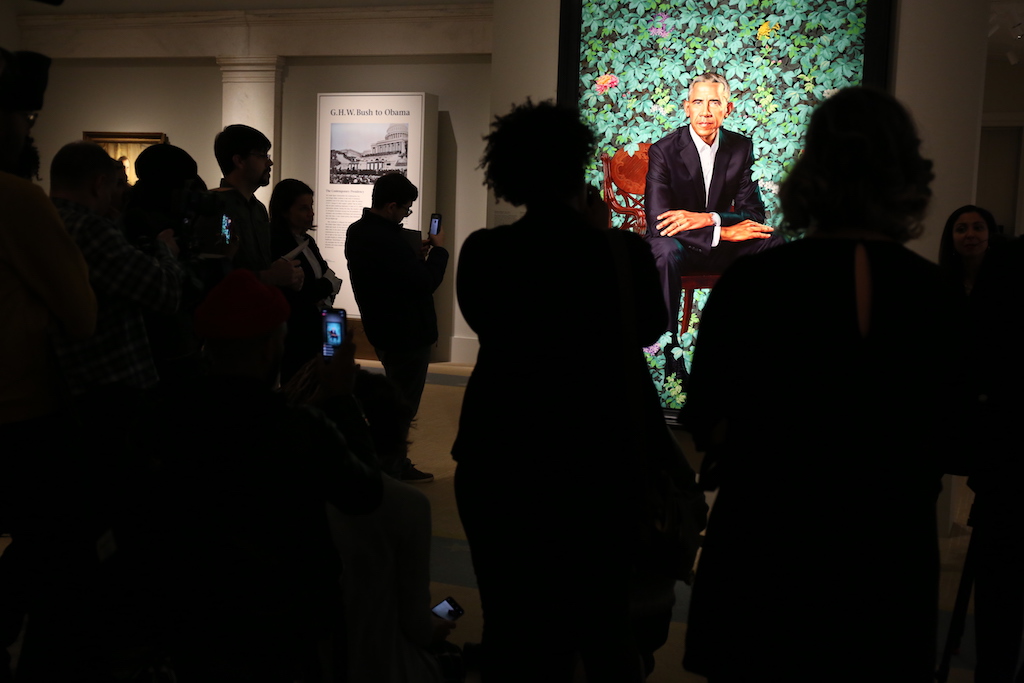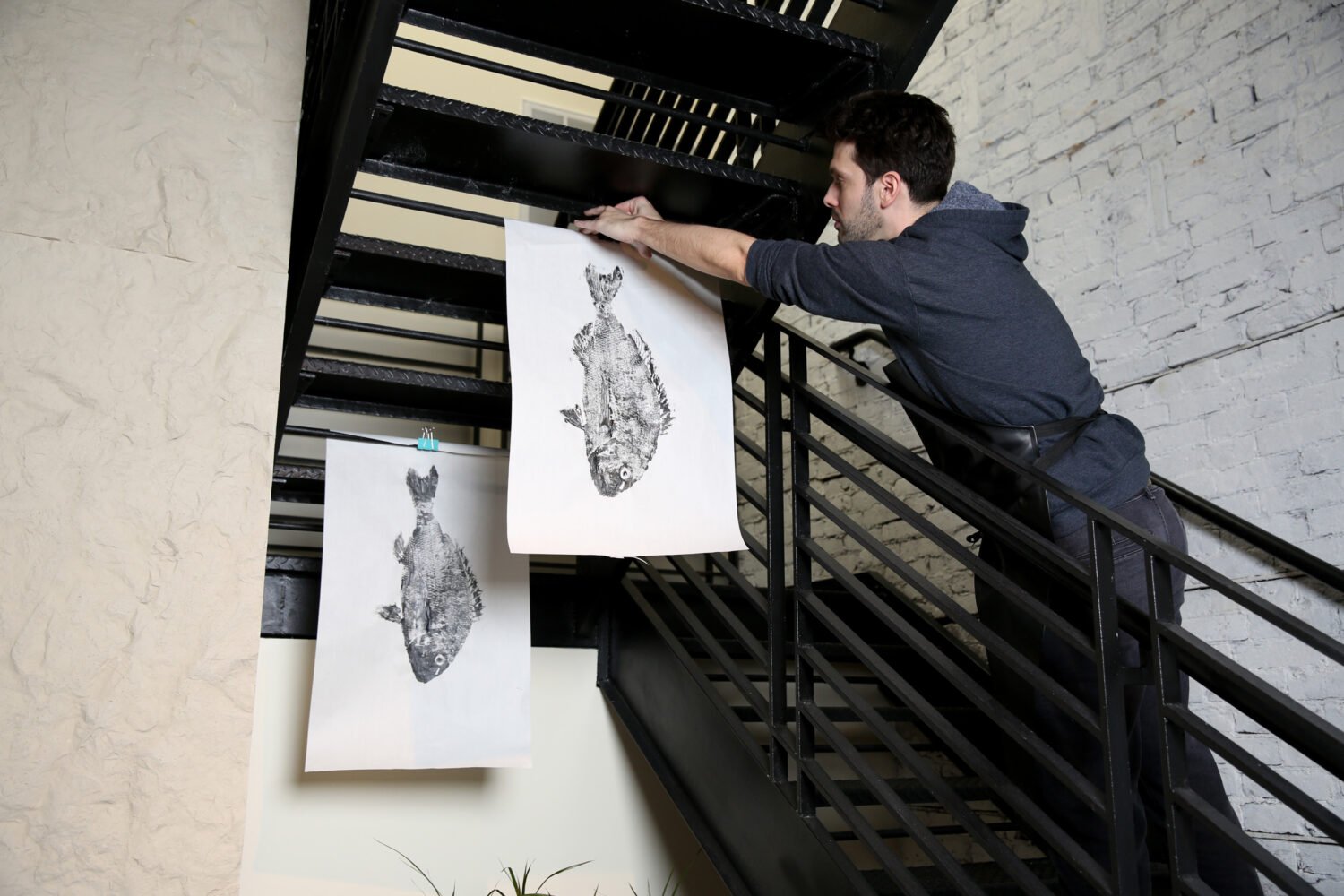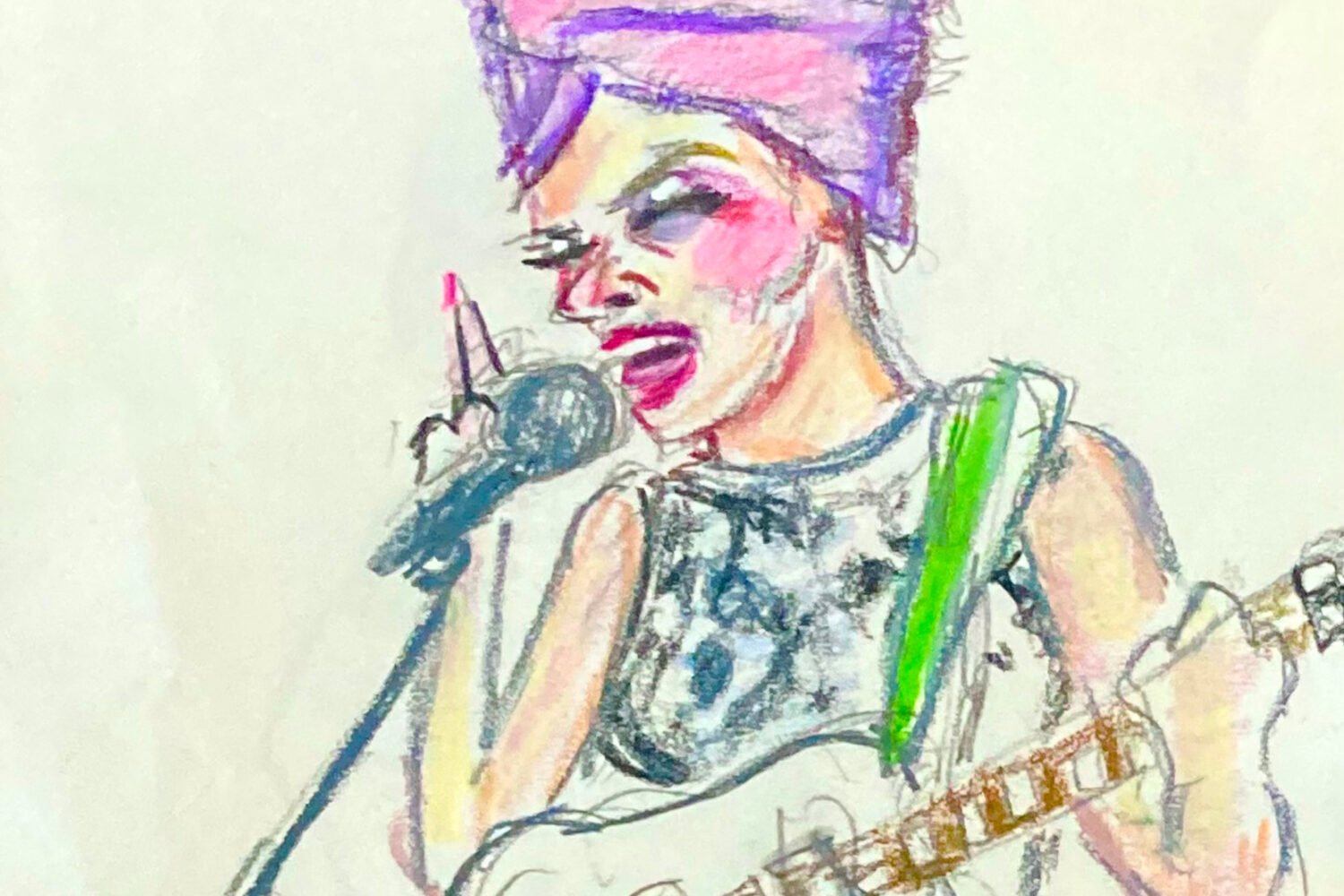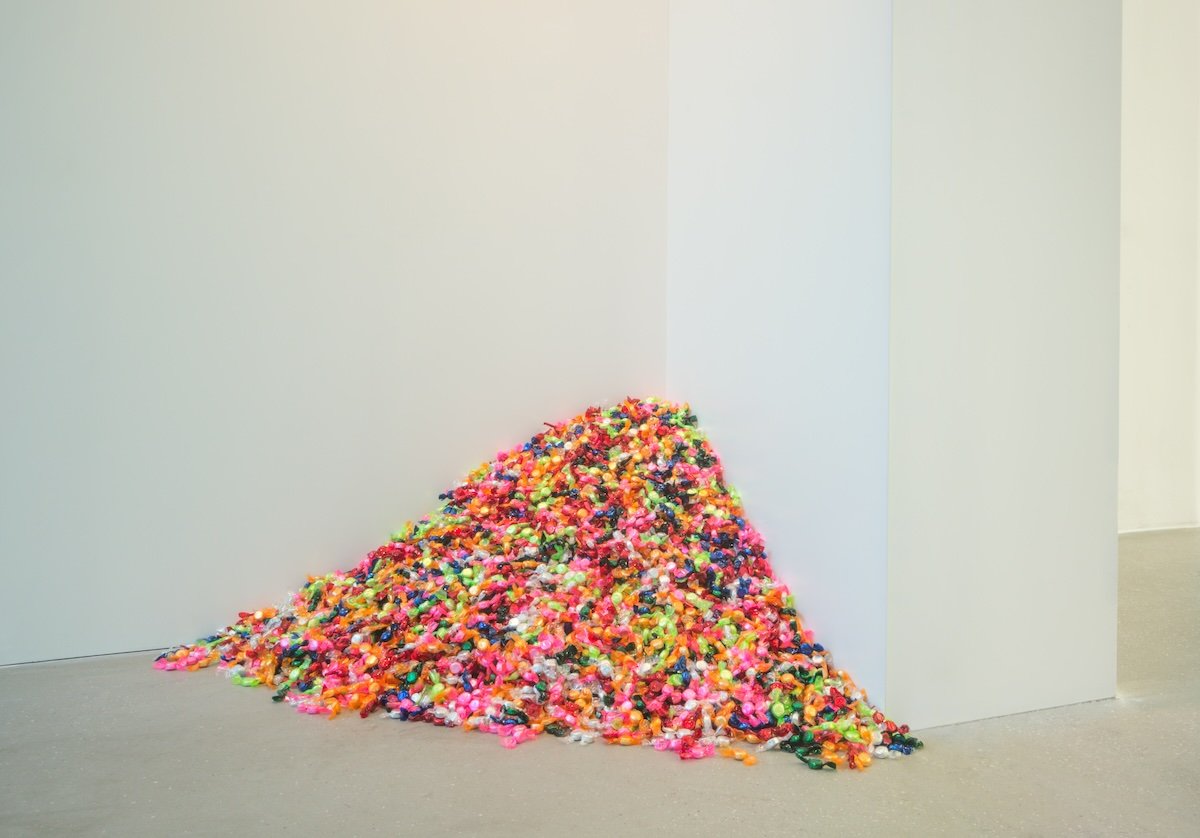Jayne Jerkins stands off to the side of Kehinde Wiley‘s new portrait of Barack Obama at the National Portrait Gallery. It’s Tuesday, February 13, the first day the painting is on display to the public, and she’s already had her turn to admire it up close. As others pose alongside the portrait of a stoic Obama, surrounded by greenery and colorful chrysanthamums, Jerkins, a retired lawyer and 30-year DC resident, tears up.
“For me, I’m so excited as I see this, because I know he’s gonna keep doing incredible things.” Referring to the artist, she says, “I think he intended it to be different, and there’s meaning in the difference,” she said. “As I’ve been standing here, I hear people gasp. I’ve heard people say ‘oh there he is,’ as if this is really is the embodiment of him. And saying ‘I miss him.’ ”
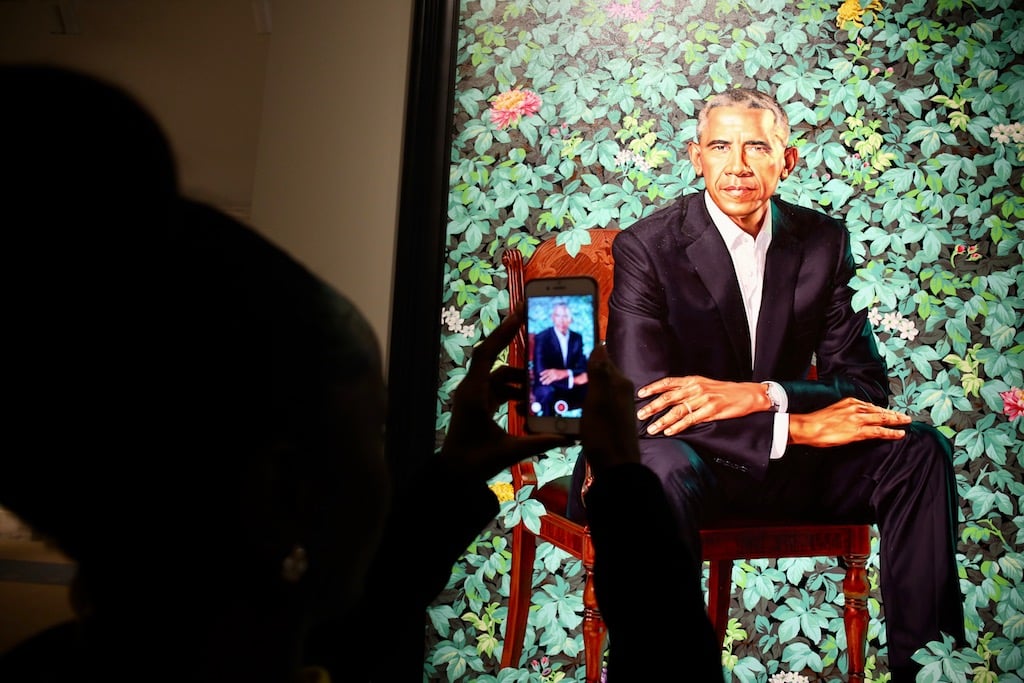
Indeed, while wandering around the gallery, you hear spectators repeatedly refer to the portraits by the first names of their subjects, as if the Obamas are personal friends that they all must take a photo with.
“I can’t go through this line without remarking just about how strange it is to have this portrait that you’re coming to see, and then being totally consumed by pulling my phone out and getting a picture of it,” said governance consultant Justin Wood. “And not just kind of being lost in the moment.”
Downstairs, visitors take selfies with Amy Sherald‘s portrait of Michelle Obama. Most carry smartphones, but Rockville resident Arthur Halpern holds up his flip phone to snap a photo of the former first lady.
“It’s all about the dress,” Halpern says. But after another look, “But she’s more than that isn’t she?”
Wood has his own interpretation of the “more.”
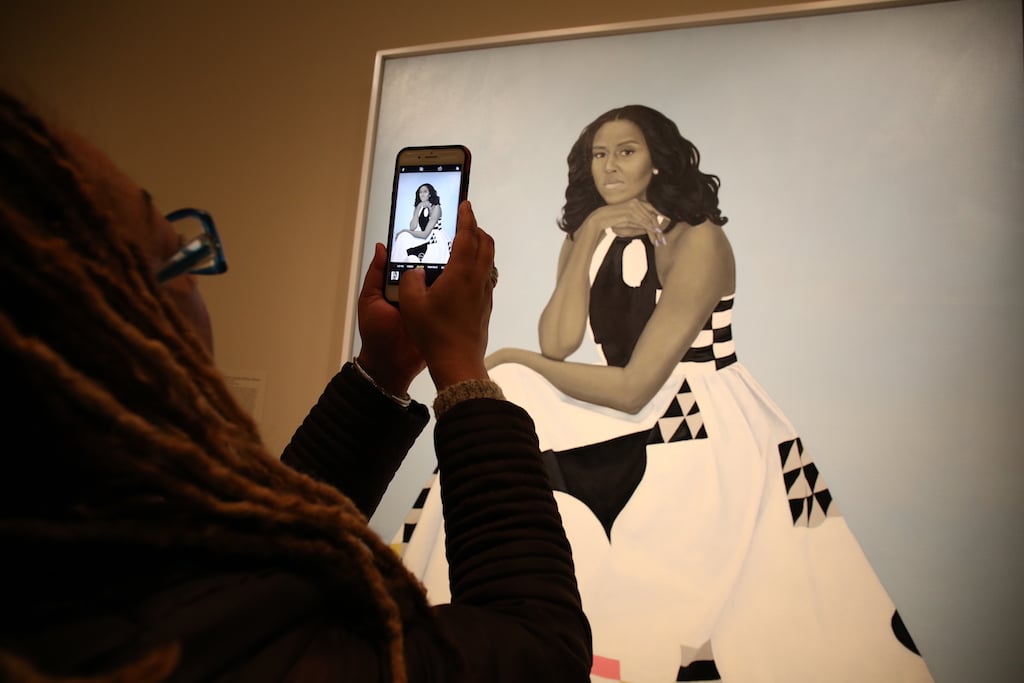
“It perfectly captures the essence of Michelle and kind of the identity that she tried to shape for the public, and what we all embraced about her,” he says. “This is an incredibly intelligent, strong women with strong personality.”
Before the gallery opened at 11:30, people anxiously gathered outside, despite the cold, so they could be among the first non-celebrities to catch a glimpse of Wiley and Sherald’s works.
Once doors opened, lines quickly formed. Michelle’s, on the first floor, trickled into the courtyard. But Barack’s, on the second floor of the gallery, ended in the courtyard, winded around a corner, and up a flight of steps that lead to the America’s Presidents exhibit.
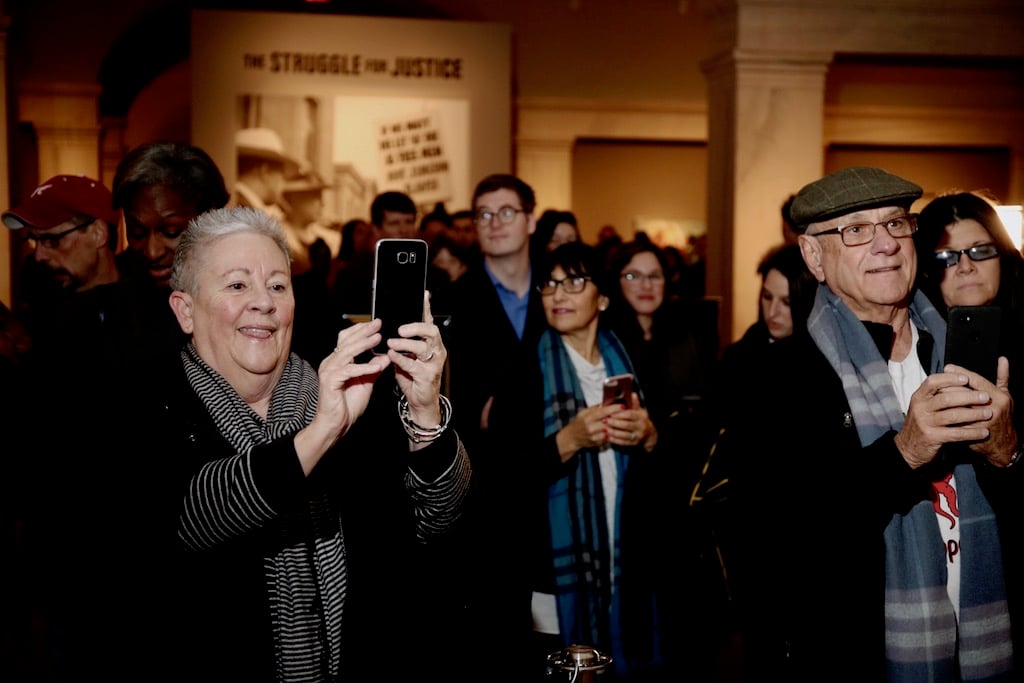
Why would people show up to in such numbers to see something that wasn’t going anywhere? “I think it cements the milestone that he represented in terms of his presidency and the type of person that he is,” Halpern says. He also guessed that many people were there out of sorrow over Donald Trump “and the damage being done that, for the most part, is focused on Obama’s accomplishments.”
Alexis Vigil, a youth developer, examined the president’s stance, noting his posture and eye-contact communicated that of a man suppressing the pressure of a closely watched two terms.
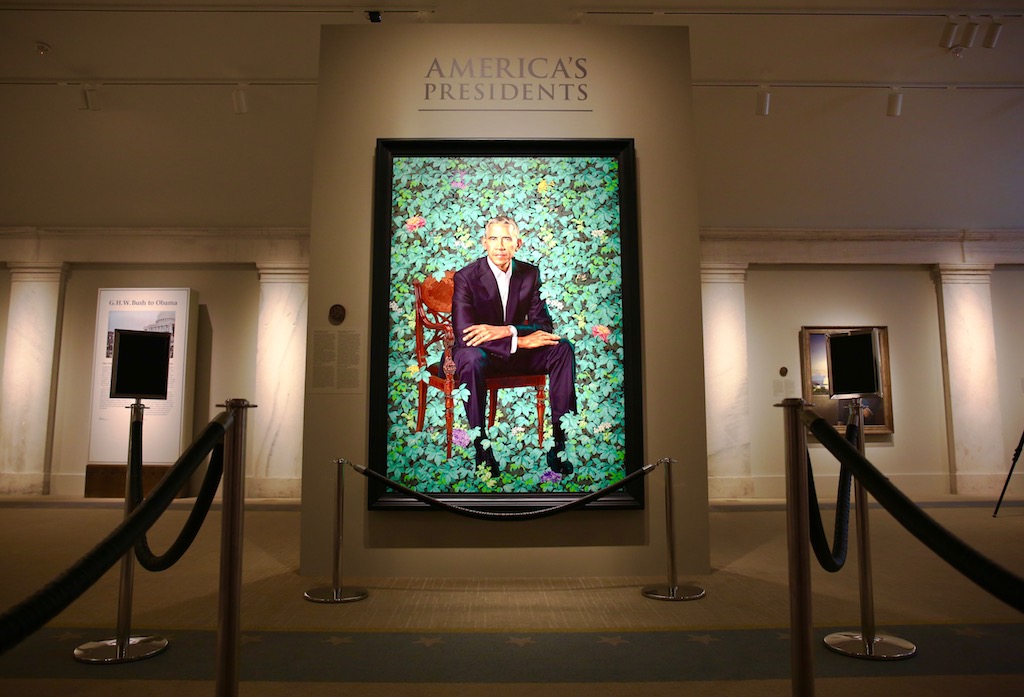
As Vigil noted, Obama’s portrait doesn’t look like the others in America’s Presidents. Paintings of Reagan and Lincoln, George Washington and FDR, all have one thing in common: they’re of white men.
While we’ve had ten years to get used to the idea of the first black president, it still holds weight to those in DC. Now, there’s two paintings in the National Portrait Gallery that remind people of that impact, and yes, provide ample selfie opportunities.
“It’s really just a blessing to be in DC and just have this right down the street from where I live,” Vigil says. “I was born and raised in DC, so it’s a big deal. It’s a really big deal.”

